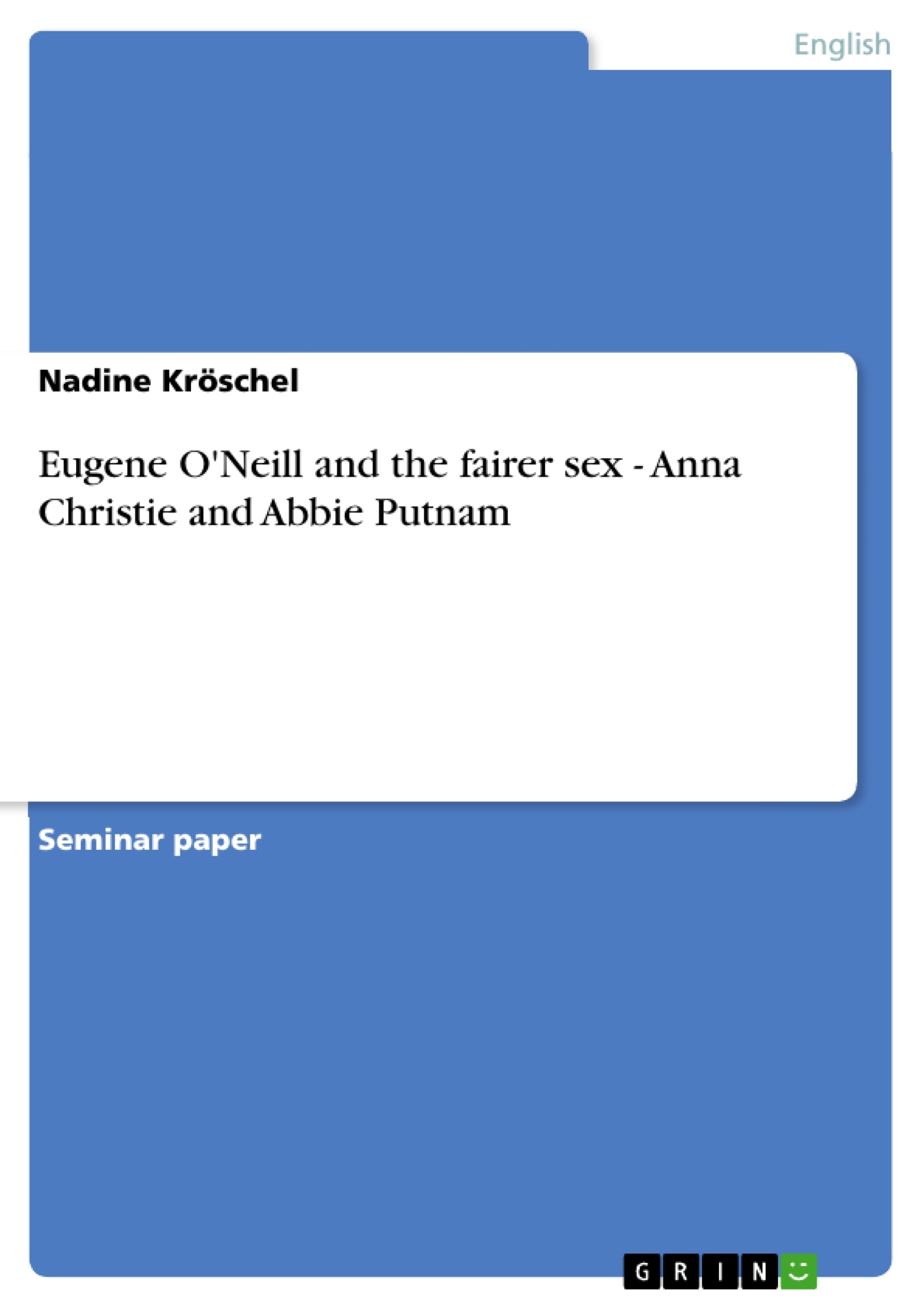Eugene O’Neill’s portraits of women have occupied a position of prominence in his works and his efficacious handling of their psychological states, offers a comprehensive insight into the arena of their motivation and actions. Women in general play a huge role in the life of the American playwright Eugene O’Neill.
One of Eugene O’Neill’s earliest heroines is Anna Christie. The play Anna Christie, written in 1920 and first published in 1922, is an outgrowth of the earlier play called Chris Christopherson. In Chris Christopherson, Anna’s father dominates the play, whereas in Anna Christie the protagonist is a woman. It is the story of Anna’s regeneration through the love of a man and under the influence of the sea. Anna used to work as a prostitute but is now living happily on her father’s barge and says of herself to have preserved a virginal soul. On her father’s barge she meets Mat Burke with whom she falls deeply in love. Their passion develops rapidly up to a point where Anna confesses her past.
“[…] I wasn’t no nurse girl the last two years - I lied when I wrote you - I was in a house, that’s what!yes, that kind of a house - the kind sailors like you and Mat goes to in port - and your nice inland men, too - and all men, God damn’em! I hate ‘em! Hate ‘em!” (“Anna Christie” 339)
Mat’s reaction to this revelation is a violent one and he continuously rebels against the idea of marrying a woman with such a troubled past. However, Anna asserts that she never really loved any man before she met him. In a desperate attempt to get away from Anna, Mat gets drunk. He leaves and signs on a steamer for Cape Town. In the end, he realized that he cannot escape from his feelings and returns to Anna, willing to ignore his initial doubts.
“If I was believing - that you’d never had love for any other man in the world but me - I could be forgetting the rest, maybe.” (“Anna Christie” 350).
“[…] We’ll be wedded in the morning, with the help of God.[Still more
defiantly.] We’ll be happy now, the two of us, in spite of the divil! [He
crushes her to him and kisses her again.][…]” (“Anna Christie” 352)
Two years later, in 1924, when O’Neill wrote Desire under the Elms he still holds up to this theme of a prostitute helplessly trapped by circumstances. As I stated before, the prostitute Anna Christie was transformed through the true love of Mat Burke. [...]
Inhaltsverzeichnis (Table of Contents)
- Introduction
- A woman's personae - The Jungian Classification
- The Mother
- The Hetaira
- The Amazon
- The Medium
- The fairer sex
- Anna Christie
- Abbie Putnam
- Conclusion
- Eugene O'Neill's women an attempt of a final analysis
Zielsetzung und Themenschwerpunkte (Objectives and Key Themes)
This paper examines Eugene O'Neill's portrayal of women in his plays, particularly focusing on the characters of Anna Christie and Abbie Putnam. The main objective is to analyze the psychological states of these women and how their motivations and actions are shaped by their past experiences and social circumstances. The paper utilizes Carl Gustav Jung's and Toni Wolff's classification of women to categorize the protagonists.
- The portrayal of women in Eugene O'Neill's plays
- The influence of Carl Gustav Jung's theory on O'Neill's work
- The transformation of female characters through love and social change
- The role of social and cultural circumstances in shaping women's behavior
- The application of Jungian archetypes to understand female characters
Zusammenfassung der Kapitel (Chapter Summaries)
- Introduction: The introduction sets the stage by highlighting the importance of women in Eugene O'Neill's works and introduces the two main characters, Anna Christie and Abbie Putnam. It briefly outlines the background and significance of both characters.
- A woman's personae - The Jungian Classification: This chapter discusses the influence of Carl Gustav Jung's theory on Eugene O'Neill's portrayal of women. It explains Jung's theory of repression and the concept of archetypes, particularly the four categories of the Archetypal Feminine: Mother, Hetaira, Amazon, and Medium.
- The fairer sex: This chapter delves into the specific characters of Anna Christie and Abbie Putnam, examining their individual journeys and how they fit within the Jungian classification system. It explores the themes of love, redemption, and the impact of past experiences on their present lives.
Schlüsselwörter (Keywords)
The main keywords and focus topics of this paper include: Eugene O'Neill, female characters, Anna Christie, Abbie Putnam, psychoanalysis, Jungian theory, archetypes, Mother, Hetaira, Amazon, Medium, prostitution, love, redemption, social change, American drama.
- Arbeit zitieren
- Nadine Kröschel (Autor:in), 2004, Eugene O'Neill and the fairer sex - Anna Christie and Abbie Putnam, München, GRIN Verlag, https://www.grin.com/document/58174



